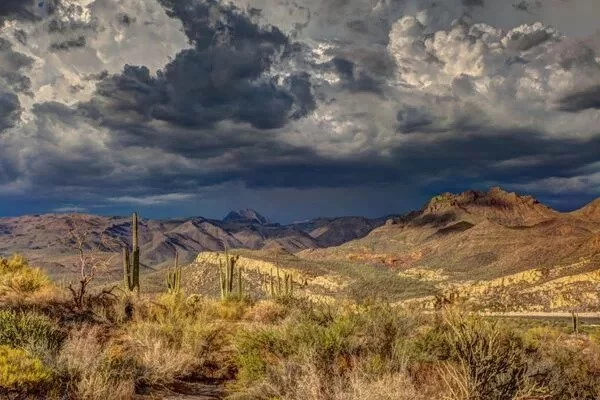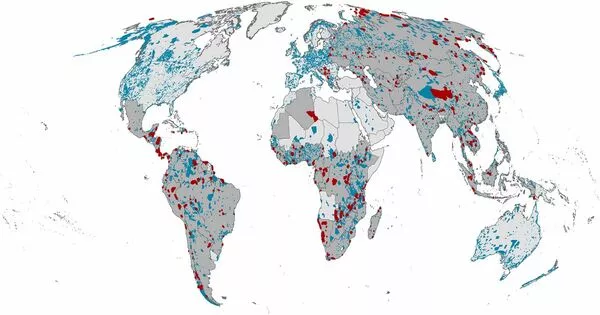Protected areas are an important tool in conserving biodiversity, but they need to be effectively managed and enforced to have a meaningful impact. This includes making sure that they are adequately funded, staffed, and have clear and enforced regulations that protect wildlife and ecosystems. In addition, it is important to consider the social and economic impacts of protected areas and to involve local communities in their planning and management. By working together to create and maintain effective protected areas, we can help to conserve biodiversity and secure a better future for all life on Earth.
According to a new study led by researchers from the UK Centre for Ecology & Hydrology, the UK’s protected natural areas are struggling to halt declines in insects and spiders that have occurred over the last 30 years (UKCEH).
Nature reserves, Sites of Special Scientific Interest (SSSIs), Special Areas of Conservation, and other forms of protected habitat have long been regarded as critical tools in conservation efforts to preserve and restore natural habitats. The new study, which collected nearly one million records for more than 1,230 invertebrate species between 1990 and 2018, suggests that these protected areas are just as vulnerable to the country’s overall biodiversity decline.
Rare species are frequently helped by designated protected areas. The more common species, on the other hand, appear to be falling through the cracks. It should serve as a cautionary note, as today’s common species could become tomorrow’s rare species.
Dr. Cooke
The authors discovered that protected areas had more species than unprotected areas of the country, but both had similar rates of decline in native insects and spiders over the last 30 years.
According to the findings, pollinators such as bees and hoverflies have suffered particularly severe declines. The findings suggest that, while protected areas aid in the conservation of valuable habitats and the species that inhabit them, they require more assistance in dealing with the broader threats posed by climate change, pollution, and invasive species, which are causing biodiversity loss across the country.
“We see parallel trends for invertebrates in both protected and unprotected areas,” said Dr Rob Cooke, an ecological modeller at UKCEH and lead author of the study. “It is worrying, as you would expect species to show more positive trends in protected areas.”
The declines found in the study equate to the loss of more than three species per decade for protected areas and less than two species per decade for unprotected areas.

The study, published in the journal Biological Conservation, drew on data from a variety of different invertebrate recording schemes across the UK, including observations of ants, bees, hoverflies, ladybirds, spiders, and wasps. Dr Cooke, along with UKCEH colleagues Dr Francesca Mancini, Dr Robin Boyd, Dr Nick Isaac, and researchers from the University of Sheffield, then looked at changes in biodiversity over the course of the study.
They discovered that there were nearly twice as many rare species in protected areas as in unprotected areas of the UK. These rare species’ trends remained stable in both protected and unprotected areas, indicating that conservation efforts were benefiting them. However, the authors discovered significant declines in common species, particularly in protected areas.
Dr. Cooke stated: “Rare species are frequently helped by designated protected areas. The more common species, on the other hand, appear to be falling through the cracks. It should serve as a cautionary note, as today’s common species could become tomorrow’s rare species.”
The researchers conclude that the UK’s large number of protected areas may play a larger role in the future. Some notable conservation success stories have come from protected areas, including the bittern, the ladybird spider, and the chalkhill blue butterfly. However, the authors believe that more can be done to ensure that protected areas benefit all of the country’s biodiversity. They believe that evidence-based policies, targets, and management that focus on effectiveness rather than just the coverage of protected areas may be required.
Dr Cooke added: “I think the positive thing we can take from this is that we have a clear opportunity to make protected areas better for biodiversity.”
Notes:
The study showed that between 1990-2018:
- Occupancy of all invertebrates in protected areas declined by 12.8% while in unprotected areas it declined by 11.5%.
- Pollinators declined by 17.5% in protected areas and 20.3% in unprotected areas
- Common species declined by 12.8% in protected areas and 6% in unprotected areas
To improve the accuracy of the modeling results, the study collected data from groups of species. As a result, there was less certainty about how much individual species declined or improved during the study period. Rare species that have benefited from being protected include the ivy bee, the red-headed ladybird, the ruby-tailed wasp, and several jumping spider species.
The two-spot ladybird, 10-spot ladybird, seven-spot ladybird, common marsh hoverfly, Orange-legged Furrow bee, Cuckoo wasp, common Candy-striped spider, and forked pirate spider are all common invertebrates that have declined in protected areas.





